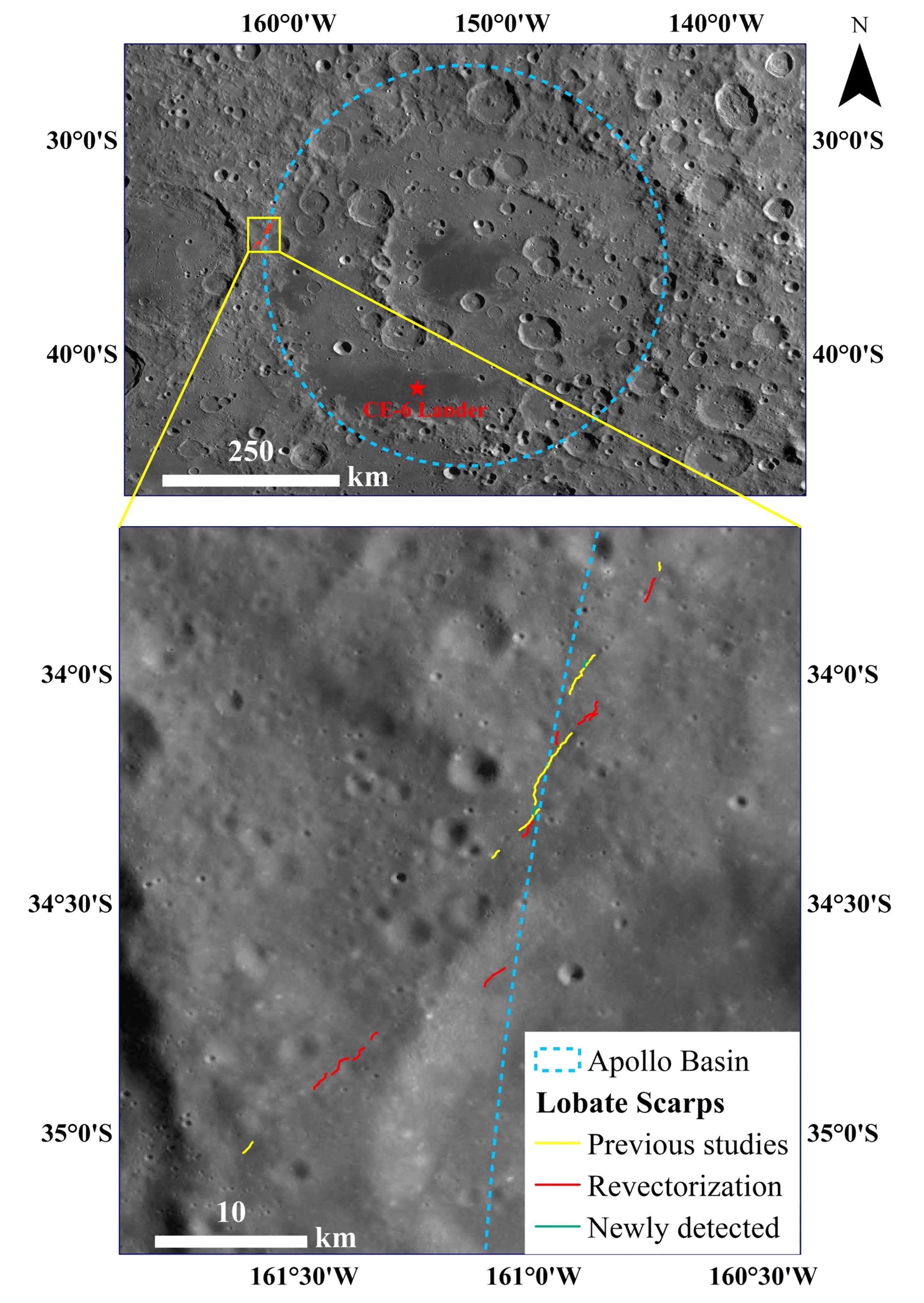AI-generated DEMs Help Reveal Moon's Lobate Scarps Near Chang'e-6 Landing Site
A research team led by Prof. DI Kaichang from the Aerospace Information Research Institute (AIR) of the Chinese Academy of Sciences (CAS) has developed an innovative method to advance the study of lobate scarps—small reverse fault landforms thought to reflect ancient tectonic activity on the Moon.
By leveraging an AI technique known as generative adversarial network (GAN), the team combined high-resolution imagery from NASA's Lunar Reconnaissance Orbiter Camera (LROC) Narrow Angle Camera (NAC) with lower-resolution digital elevation model (DEM) data to generate pixel-scale DEMs at a 2-meter resolution. The new method is not constrained by NAC-derived DTM coverage limitations and reveals surprising details about the shape and origin of these features, offering fresh clues about how the Moon evolved.
The findings challenge the traditional lunar magma ocean (LMO) model theory, which suggests the Moon's early surface exists a magma ocean only a few hundred kilometers deep. Instead, the results lend support to an alternative theory—the initially totally molten (ITM) model—which proposes that the Moon began its life totally molten.
The research findings was recently published in the Icarus.
The research focused on 18 lobate scarps located approximately 300 km northwest of the Chang'e-6 landing site within the Moon's Apollo basin. By combining advanced geological modeling with crater size-frequency distribution (CSFD) measurements, the team revealed that these scarps were formed by intense horizontal pressures—exceeding 400 megapascals—within the last 80 million years. These powerful forces likely came from the Moon slowly shrinking as it cooled, a process that aligns with the ITM model. The theory suggests the Moon was once entirely melting and later contracted as it solidified, leaving behind surface wrinkles like these scarps as clues to its fiery past.
The GAN-based DEM generation technique demonstrated remarkable accuracy, exhibiting a root mean square error of only 0.75 meters when validated against high-resolution DTMs from the Lunar Reconnaissance Orbiter Camera (LROC) Narrow Angle Camera (NAC). This high precision enabled detailed three-dimensional morphological analysis of lunar scarps, showing an average dip angle of 22.95°, a relief of 18.7 meters, and a horizontal displacement of 46.5 meters. Notably, the calculated displacement-length ratio of 3.80% substantially exceeds values previously documented for similar tectonic features on Mars and Mercury, highlighting unique deformation characteristics in the studied lunar regions.
Age dating using buffered crater counting (BCC), combined with two chronological functions, indicated that the lunar scarps formed between 52.8 and 74.9 million years ago (Ma), with an average age of 59.3 Ma. These findings align with the ITM model which predicts persistent tectonic activity driven by the Moon's ongoing thermal contraction and cooling. In contrast, the results challenge the LMO model’s premise that large-scale magmatic activity ceased early in the Moon's history.
The study further integrated isotopic data from Chang'e-6 samples, revealing 2.8-billion-year-old (Ga) basalts are depleted in KREEP—a geochemical component rich in potassium (K), rare earth elements, and phosphorus. This finding challenges the hypothesis that radioactive decay to prolonged magmatic activity of the LMO lunar evolution model.
Looking ahead, the research team plans to refine the GAN-based DEM technique and apply it to broader lunar regions. This approach could become a cornerstone for future lunar lobate scarps' and geological studies, offering high-precision data to unravel the lunar thermal history and tectonic evolution.
The research was supported by the National Key Research and Development Program of China and involved collaboration with multiple institutions.

Spatial distribution of lobate scarps at the northwest of the Chang'e-6 landing area shown on the LROC WAC image. (Image by AIR)



News & Events